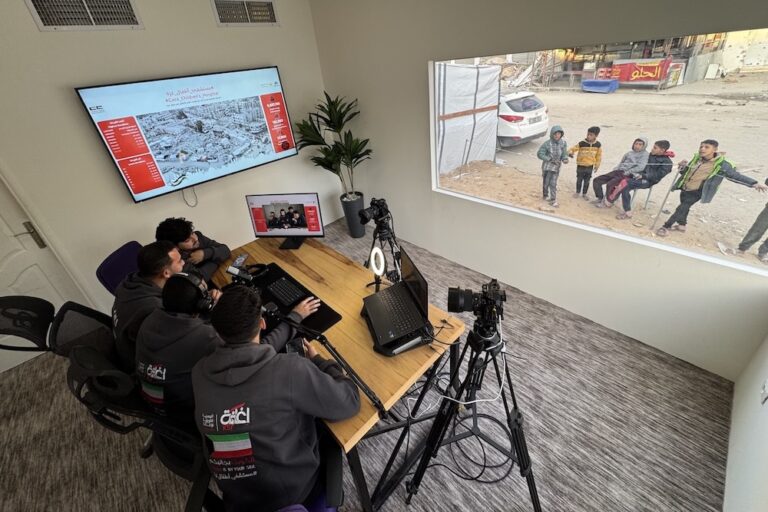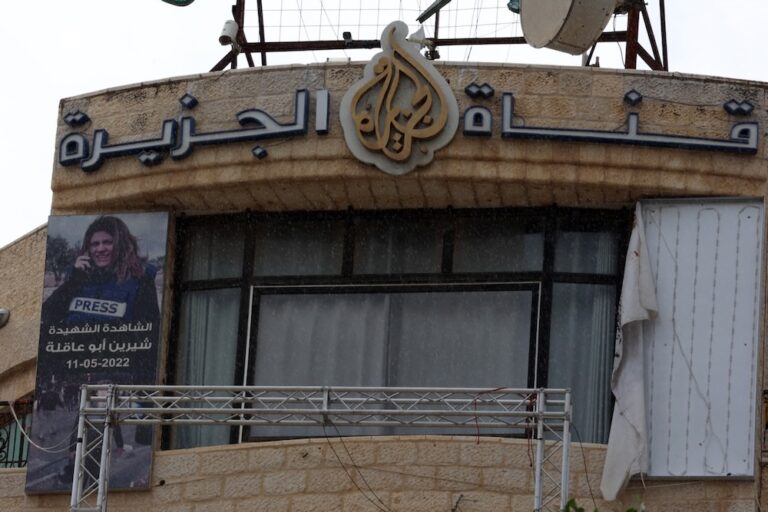The Israeli government published a report of its investigation into French TV station France 2’s coverage of 12-year-old Palestinian Muhammad al-Durrah’s death during rioting in the Gaza Strip on 30 September 2000 and the disputed claim that he was killed by a shot fired from Israeli positions.
The Israeli government has just published a report of its investigation into French TV station France 2‘s controversial coverage of 12-year-old Palestinian Muhammad al-Durrah’s death during rioting in the Gaza Strip on 30 September 2000 and the disputed claim that he was killed by a shot fired from Israeli positions.
The report’s release came three days ahead of today’s announcement by a Paris appeal court that it will finally issue its ruling on 26 June in the defamation case between France 2‘s Jerusalem correspondent, Charles Enderlin, and Media Rating founder Philippe Karsenty, who suggested that the teenager’s death was staged.
The Israeli report, which is very critical of France 2‘s staff, was produced by a committee consisting of representatives of various ministries, the police and the Israel Defence Forces. It was appointed by Prime Minister Benyamin Netanyahu last September.
“While the Israeli government has the right to respond publicly to a media report it regards as damaging, the nature and substance of this report are questionable and give the impression of a smear operation,” Reporters Without Borders secretary-general Christophe Deloire said.
“As regards to the substance, Charles Enderlin has always said he would be ready to testify to a commission of enquiry in conditions that guaranteed impartiality and independence. These conditions were not respected, and Enderlin was not asked to testify. Nor was he asked to provide his unused footage of the incident.
“Above all, the committee’s published findings consist of just 11 pages on the ‘facts’ of the case and has another 30 pages condemning the way France 2‘s report was used. We think it is absurd and unacceptable to accuse Enderlin’s report of having ‘played a major role in inciting terrorism and violence, both in the Israeli-Palestinian arena and worldwide’.”
The committee claims to have based its findings on France 2‘s raw video footage of the incident. Enderlin says he posted all of the footage online. Is that what the committee used? The report’s authors do not say. It claims there is no evidence to support Enderlin’s account of the incident but produces no evidence to support its own claim.
The committee claims that evidence suggests that neither Muhammad al-Durrah nor his father, Jamal Al-Durrah, sustained a gunshot injury that day. In particular, it claims that no trace of blood was found the next day at the spot where they were filmed. The report, which does not name the source of this claim, also claims there was no sign of blood in the video footage.
According to the committee’s findings, the broadcast footage excluded a movement of Muhammad al-Durrah’s hand and elbow that can be seen in the raw footage after Enderlin’s voice said he had been killed.
The committee quotes Dr. Ricardo Nachman, deputy director of the Tel Aviv forensic centre, as saying the boy could not have moved in that way if, as France 2 claimed, he had already been hit by gunfire.
The Franco-Israeli surgeon Yehuda David is quoted in the report’s appendix as saying the father’s injuries could have been sustained prior to the incident filmed by France 2′s cameraman. But David bases his claim on medical reports and did not examine Jamal Al-Durrah himself after the incident.
“This report is absurd,” Enderlin said. “How can the report’s authors omit the fact that Jamal Al-Durrah was hospitalized the next day in the Jordanian capital of Amman? How can they claim that the Israel Defence Forces did not open fire?”
A journalist’s friend, Guillaume Weill-Raynal, added: “No ballistic report has ever been produced to support these claims, which were already being made prior to this report.”
Barak Ravid, the Israeli daily Haaretz’s diplomatic correspondent, said: “This report on the Muhammad al-Durrah case is probably one of the least convincing documents produced by the Israeli government in recent years.”



